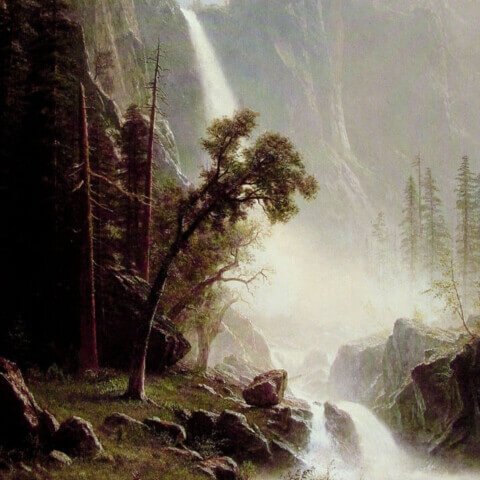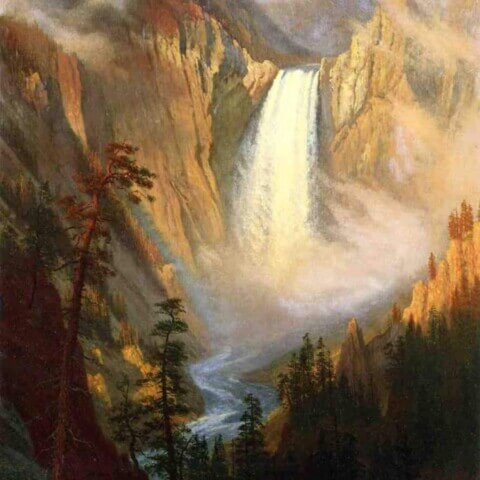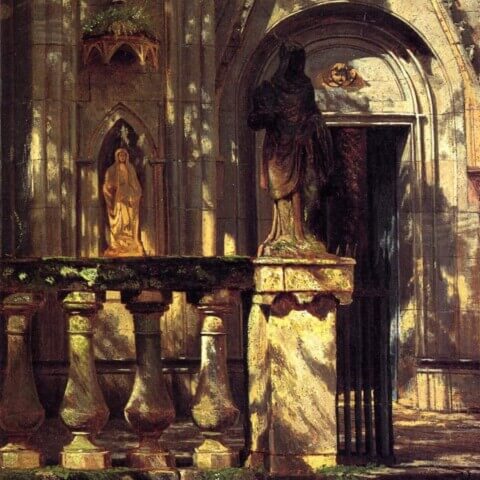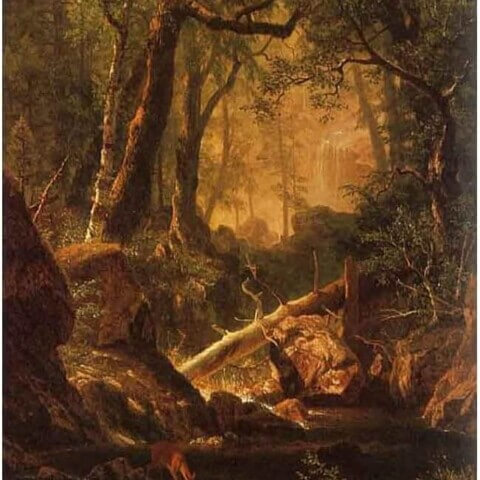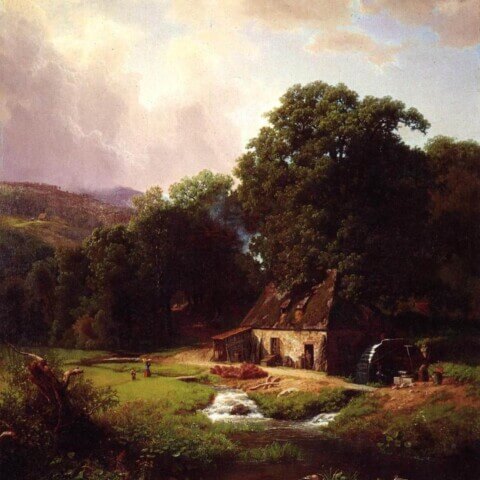Albert Bierstadt
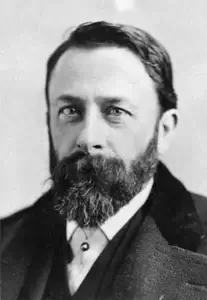
Biography of Albert Bierstadt
Albert Bierstadt was a renowned 19th-century landscape painter known for his majestic and breathtaking depictions of the American West. Born on January 7, 1830, in Solingen, a town in the Duchy of Berg, now part of Germany, Bierstadt would go on to become one of the most celebrated artists of his time.
Bierstadt’s family immigrated to the United States when he was just a baby, settling in New Bedford, Massachusetts. Growing up in an artistic household, his talent for painting became evident at an early age. Bierstadt’s interest in art led him to study at the Düsseldorf School of Painting in Germany, where he received formal training in the Hudson River School style of painting.
After completing his studies in Europe, Bierstadt returned to the United States in 1857 and embarked on several expeditions to the American West. These trips would shape his artistic career and inspire his most iconic works. Bierstadt’s paintings often depicted grand landscapes, capturing the vastness and beauty of untouched wilderness, including towering mountains, pristine lakes, and serene valleys.
One of Bierstadt’s most famous paintings, “The Rocky Mountains, Lander’s Peak,” painted in 1863, exemplifies his ability to capture the sublime beauty of the American West. The painting, which is now housed in the Metropolitan Museum of Art in New York City, showcases Bierstadt’s masterful use of light and color to create an awe-inspiring panorama.
Bierstadt’s works were highly sought after, and he enjoyed significant success during his lifetime. His paintings were exhibited in prestigious galleries across the United States and Europe, garnering critical acclaim and attracting wealthy patrons. Bierstadt’s artistry captured the imagination of the public, who were captivated by his ability to transport them to remote and untouched landscapes.
Despite his success, Bierstadt faced criticism from some art critics who considered his work overly dramatic and lacking subtlety. However, his popularity with the public remained steadfast, and he continued to receive commissions and recognition throughout his career.
Bierstadt’s paintings played a significant role in shaping the perception of the American West during the 19th century. His lush landscapes evoked a sense of wonder and possibility, fueling the popular imagination and contributing to the broader cultural narrative of Manifest Destiny.
Later in his life, Bierstadt faced personal and financial challenges. The changing artistic tastes of the late 19th century, combined with economic difficulties, led to a decline in demand for his work. Nevertheless, Bierstadt continued to paint and exhibit his art, leaving behind a legacy of extraordinary landscapes that continue to inspire artists and viewers alike.
Albert Bierstadt passed away on February 18, 1902, in New York City. Today, his paintings can be found in numerous museums and private collections around the world, and his contribution to American art and the portrayal of the American West remains significant. Albert Bierstadt’s ability to capture the grandeur of nature in his paintings continues to resonate with audiences, ensuring his enduring place in the annals of art history.
- 1
- 2

